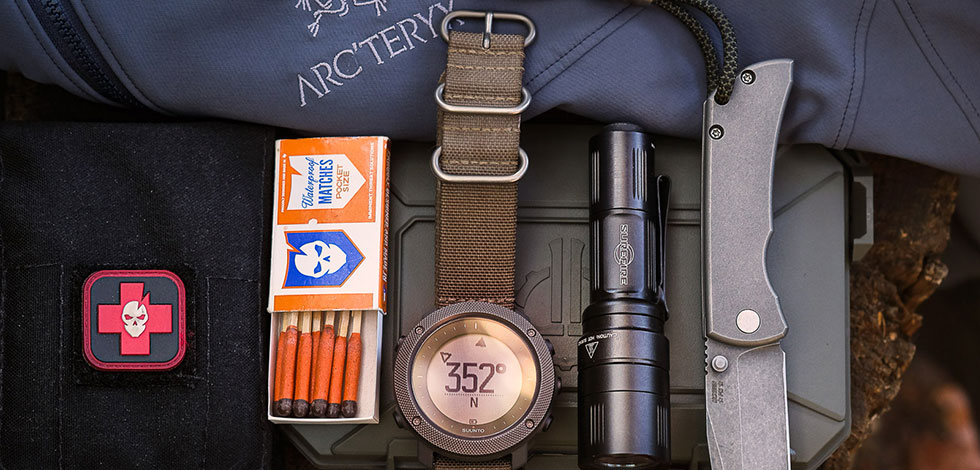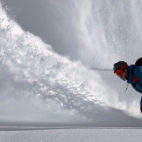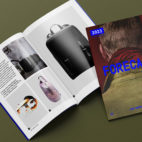6 Essentials I Never Hike Without
There are usually more than 6 essentials, which I take on every hike or adventure. But if you asked me to narrow it to really the most important stuff, my list would contain exactly 6 items, which I’d never consider hiking without. Number one is an IFAK (Individual First Aid Kit) as it can literally save someone’s life. A sharp and strong knife (usually a folding one) is number two. Then some sort of fire-starting equipment, a good waterproof flashlight and of course a mandatory navigation tool (preferably not battery dependent). And last but not least a good rain jacket. Sounds simple, but as usual the devil is in the details. So let’s take it one by one and explore a bit more in-depth. And by the way, most small EDC items I try to keep in a waterproof protective bag or better a case, like my recently acquired Thyrm DarkVault. Just for peace of mind. So let’s go.
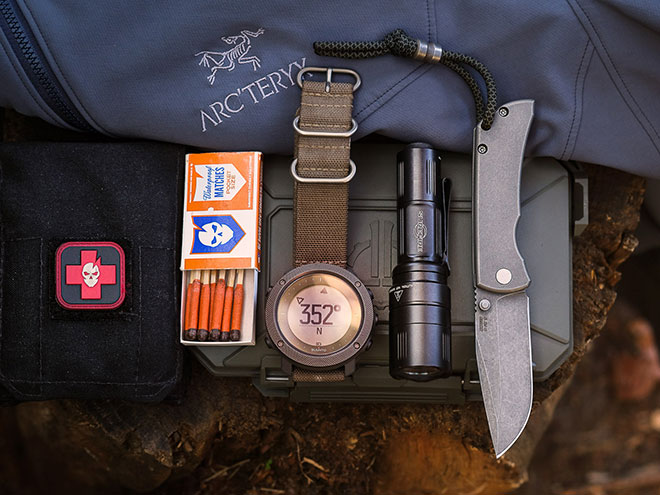
Individual First Aid Kit
An IFAK, or Individual First Aid Kit, takes the first spot for a reason. It’s an item which can literally save someone’s life, and which really can’t be easily improvised in the field (except in Hollywood blockbusters). Least used, but most important. And I’m not talking about a simple bandaid kit here (which is still good to have around to dress smaller cuts). But if something really serious would happen in the wilderness, I want to have at least a fair chance to stop and control the situation for as long as needed, while waiting for professional help. Even if it’d mean stopping a severe artery bleeding. So yes, I carry a small first aid kit for smaller injuries, but also a real trauma kit and a SOF-T type tourniquet in a quick-deploy TourniQuick pouch. I went for the ITS Tactical gear in field medical kits category – really high quality, professional grade, no-nonsense stuff. Not the cheapest, but still priced fairly. But you can also create your own kit. Just make sure you know how to use all the items you carry in your IFAK and/or trauma kit (and yes, get some training).
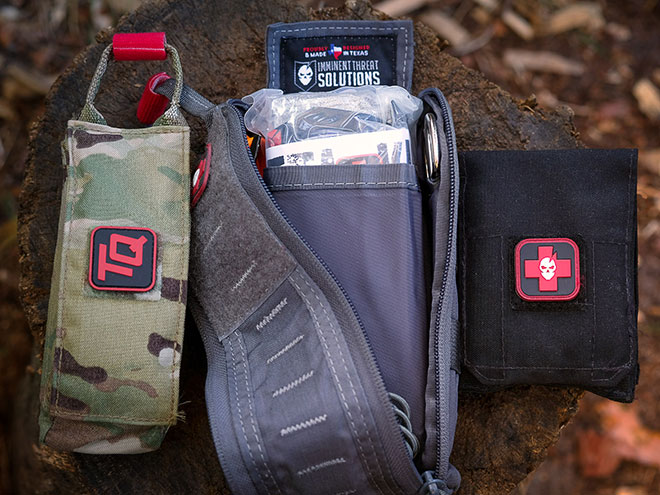
Knife
The knife is humans’ oldest tool and you really need it on your hike. Preparing food, cutting all kinds of stuff, field repairs, preparing and starting a campfire, building a camp, making a walking staff, and much more. There’s a zillion things you’d need a knife for on a backcountry hike. I usually carry two with me, one is a single-bladed locking folder, it can be a full-sized one like the GiantMouse Grand or CRK Sebenza, or a smaller EDC-sized one like the Spyderco Techno or my new McNees MAC 2 (you can find it in the first photo here). It should be strong, with perfect lockup and should keep a keen edge during extended use so steel choice is important. I’d say a good starting point is a classic folder like the Buck 110 (if you’re on a budget) or something like a Spyderco or GiantMouse if you’re ready to splash $200 for a great cutting tool. At about $500 you can buy really high-end US-made cutting machines like a Chris Reeve or McNees, which is made to last you a lifetime. Next to that I carry a compact Swiss Army Knife (SAK) of some kind, it can be a tiny one like the Victorinox Classic, or something with additional tools like a Victorinox Explorer or the new Farmer X. Of course a good tough multitool is not a bad choice either, it just could be a bit heavy for hiking.
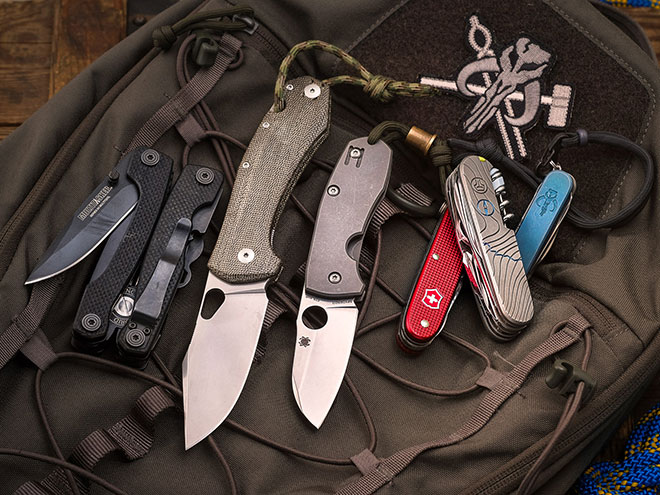
Fire
The ability to start a fire was a quantum leap in the evolution of Homo Sapiens. Fire can save you, protect you from cold, keep predators at a distance, cook your food, alert a rescue team, etc. I usually carry a ferrocerium rod with me, as it always works, no matter what, and is virtually indestructible… but you need some training to use it efficiently. So I’m a big advocate of easier fire-starting tools too: BIC or Zippo lighters are great (a Thyrm PyroVault is an awesome upgrade to your Zippo) but remember to check the flint stone in your lighter, it wears off with use. Old-school matches work too but should be the storm-proof type (ideally) or at least stored in a watertight container (even a ziplock bag should do the trick). Carrying a small piece of a sapwood is a great idea, nothing gets fire going as easy as some scraped fresh sapwood and feather sticks… so yeah, a knife is actually an essential part of a fire-starting kit too. Like the Spyderco SwayBack shown here. Now you see why a good knife is so important – you can use it for much more than just cutting food.
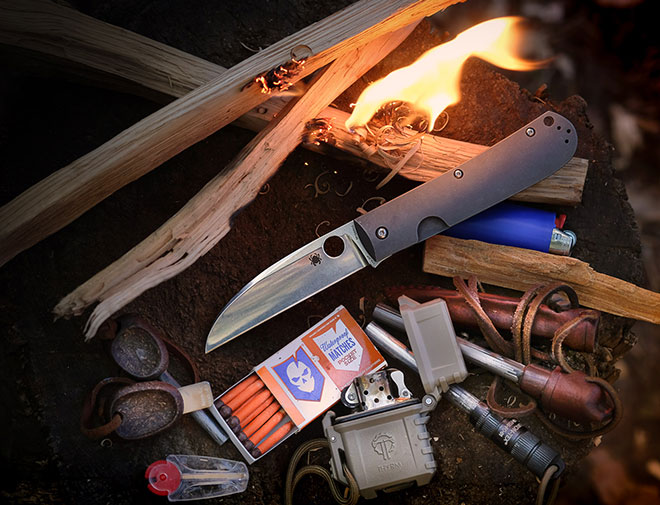
Flashlight
A flashlight is an obvious item. And even if you’re planning a day hike, take one with you. Plans are great, but sometimes reality strikes and destroys them into pieces. An unexpected night in the wilderness is just so much easier to handle with some sort of illumination tool. A handheld flashlight is fine, a headlamp is even better. Or both. And don’t forget extra batteries if going for an extended outing. Also nothing works better for night signaling than a good flashlight. Just make sure it’s tough, waterproof and full of juice. For me SureFire has always been a good choice, but Petzl works great as well and costs a fraction of SureFire’s price tag. If you decide to use a rechargeable one (very common these days, like the BioLite I reviewed here on Carryology), make sure it’s fully charged before you hit the trail.
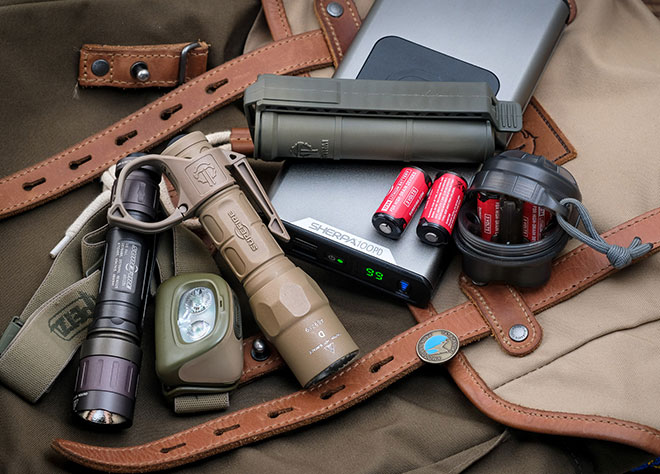
Navigation
Navigation – for me it means a compass and a map, not Google Maps in your phone. A GPS watch is great as well. A mobile? Well, only as long as you have cellular coverage with internet access. In a real backcountry scenario nothing can beat an old-school compass. My Brunton M2 is a classic one, it has served the army successfully for many decades and doesn’t need batteries to operate – both night and day. If you don’t need such precision then a quality mini-compass can be a great backup to your GPS too – like the titanium watchband compass by Prometheus Design Werx. And again: training is king! Also for successful land navigation.
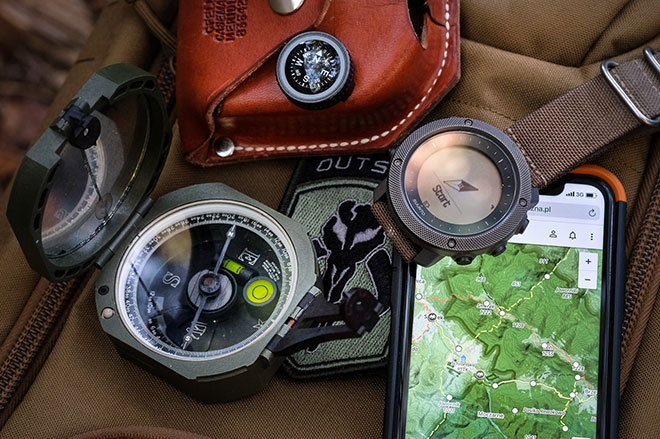
Rain Jacket
Last but not least, a rain jacket of some sort, also known as a hardshell. It is a critical piece of your hiking clothing. When would you need one? It’s as simple as this: any season, any weather, any hike. Especially in the mountains, where the weather can change dramatically in less than an hour, and sometimes even a quarter. Keeping you dry equals keeping you warm. Imagine being totally soaked on a September hike, up in the mountains, with 5 deg C outside and 50+ mph wind. And that’s not bad weather at all actually. Hypothermia is not a joke, it can kill a human being within just hours. So get yourself a really waterproof rain jacket when planning a hike in remote backcountry. A good breathable membrane (like Gore-Tex, eVent, NeoShell, Pertex Shield) works best of course. A good one is a long-term investment which will protect you from the elements during many years of hard use. So if you’re hiking a lot then even something in the Arc’teryx LEAF line could make a lot of sense. And some classic choices could be the Patagonia Triolet, Arc’teryx Zeta LT, Rab Firewall and many others available on the market. But you don’t need the latest greatest, just visit REI (or other reputable retailers) or shop online for a good deal.
So… enjoy your next hike and stay safe!
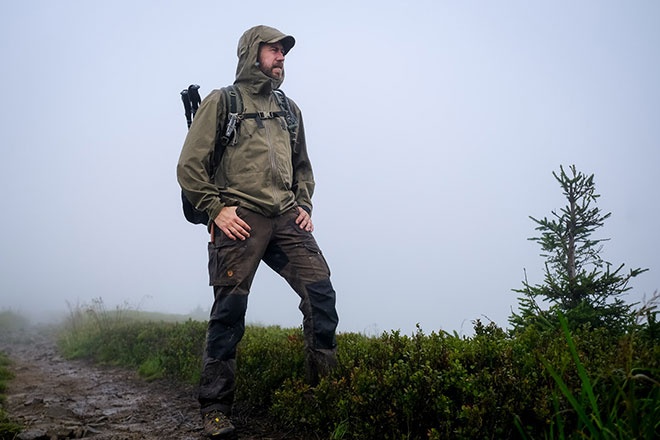





 Carry Awards
Carry Awards Insights
Insights Liking
Liking Projects
Projects Interviews
Interviews
